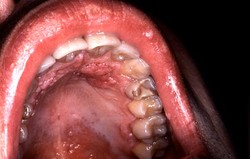Of the many potential consequences of human papillomavirus (HPV) infection, genital warts are common on the globe. Regardless of whether the patient has symptoms, the skin lesions which develop in these patients are highly contagious. Transmission of the virus can therefore take place to someone else who comes in contact with them. Other names for this medical condition are condylomata acuminata or venereal warts [1, 2].
The skin lesions of genital warts tend to be soft, moist, and flesh-colored. They occur in various sizes and shapes, and there may be a cauliflower-type appearance in clusters. Moreover, they may affect the anal or genital region of the body.




 The Reality of Aspirinon 05/24/2021
The Reality of Aspirinon 05/24/2021
 An Old Microbeon 03/31/2021
An Old Microbeon 03/31/2021
 Coronavirus and Mental Illnesson 02/14/2021
Coronavirus and Mental Illnesson 02/14/2021
 Acute Ischemic Strokeon 12/25/2020
Acute Ischemic Strokeon 12/25/2020


Comments